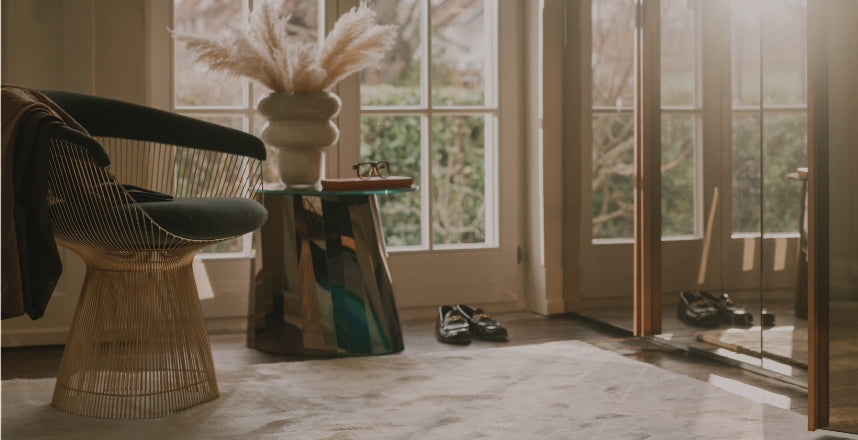“For centuries, Himalayan wool, nettle, hemp, and silk have been woven into artistic carpets – a tradition that combines nature and craftsmanship in perfect harmony.”
Perfection from nature – For unique creations
We use durable yarns that are knotted alone or in a yarn mix. Each yarn has its own properties, which we consciously use. Most yarns are sourced locally, are renewable and are processed by hand - just like hundreds of years ago. The yarns can be used in their natural color or dyed.
raw yarns in our production
-

Himalayan wool
Directly from the Himalayas to Kathmandu. This wool is of exceptional quality, with long-staple fibers and a high lanolin content. It is locally sheared, washed, and spun by hand. It has a positive effect on the indoor climate.
-

nettle
The nettle fiber comes from the local plant of the same name. The durable yarn is hand-spun into a soft rug with a natural beige color scheme.
-

silk
Silk creates an elegant sheen, pleasant coolness, and softness. Textiles and carpets have been made from this durable natural material for centuries.
-

hemp
The hemp fiber comes from the local plant of the same name. The durable yarn is hand-spun into a robust rug with a golden-brown palette.
-

Linen
Linen, or flax, is a spun natural fiber obtained from the stems of the flax plant. It gives the carpet a slight sheen and is very durable.
-

Bamboo fiber
Viscose fibers are industrially spun from cellulose—here from the bamboo plant. They are used as a silk substitute; they are soft, have a silky sheen, and are temperature-regulating.
-

Banana fiber
The viscose fibers from the banana plant exhibit an impressive sheen. They are primarily used for design accents.
-

New Zealand wool
New Zealand wool is characterized by its high quality. It is primarily used in designs with very intense colors. Wool has a positive effect on the indoor climate.
-

merino
Merino wool is characterized by its particularly fine and soft fiber.
-

mohair
The mohair fiber It is a fine, spun natural fiber obtained from the fur of the Angora goat. It is characterized by its soft, silky sheen and gives the carpet a luxurious, vibrant surface.
-

jute
Jute fiber is a spun natural fiber. It is highly durable in carpets and has an elegant golden sheen.
-

Sunpat
This somewhat coarser-spun fiber is suitable for flat weaving. It comes from a local cactus plant and was traditionally used for rope production.
-

The yarn blend of a hand-knotted rug, alongside its design, significantly shapes its character – from its feel and sheen to its color effect and texture. Each combination of wool, silk, or other natural fibers opens up unique aesthetic possibilities and largely determines the final design.
Designing my carpet
The Designercarpets Studio collection can be 100% adapted to your project - the yarn blends in the designs can be easily changed, giving the carpets a completely new effect.













